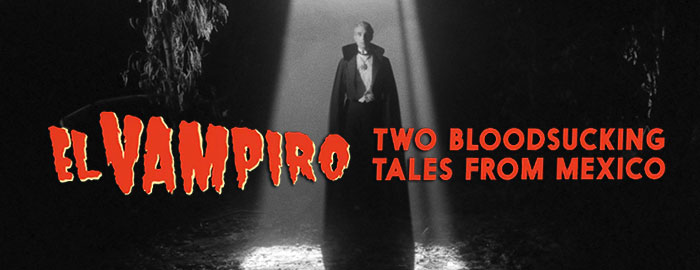
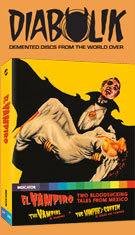

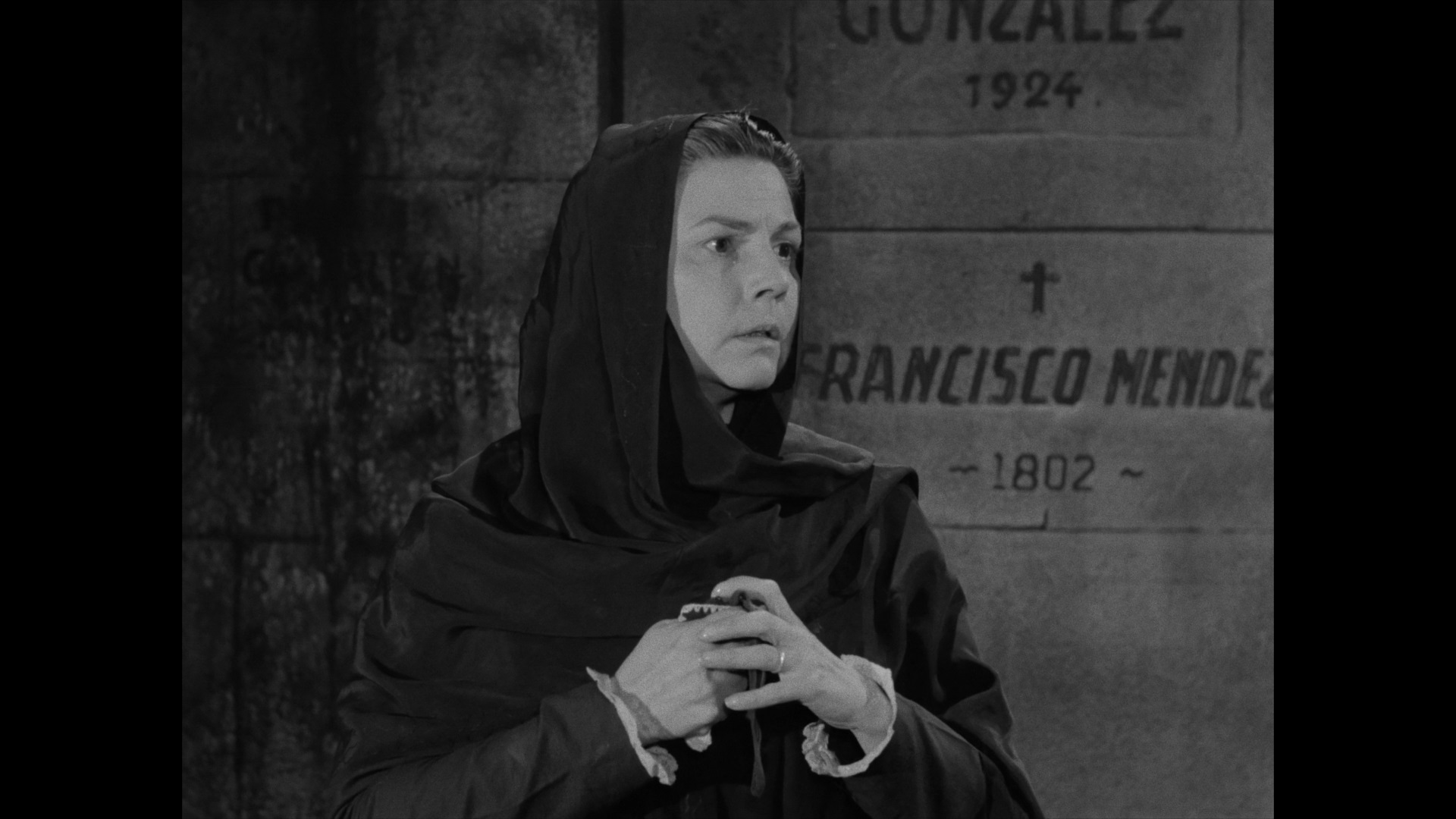 point in the wave of atmospheric Mexican horror films that found a welcome home in drive-ins and especially TV sets
point in the wave of atmospheric Mexican horror films that found a welcome home in drive-ins and especially TV sets 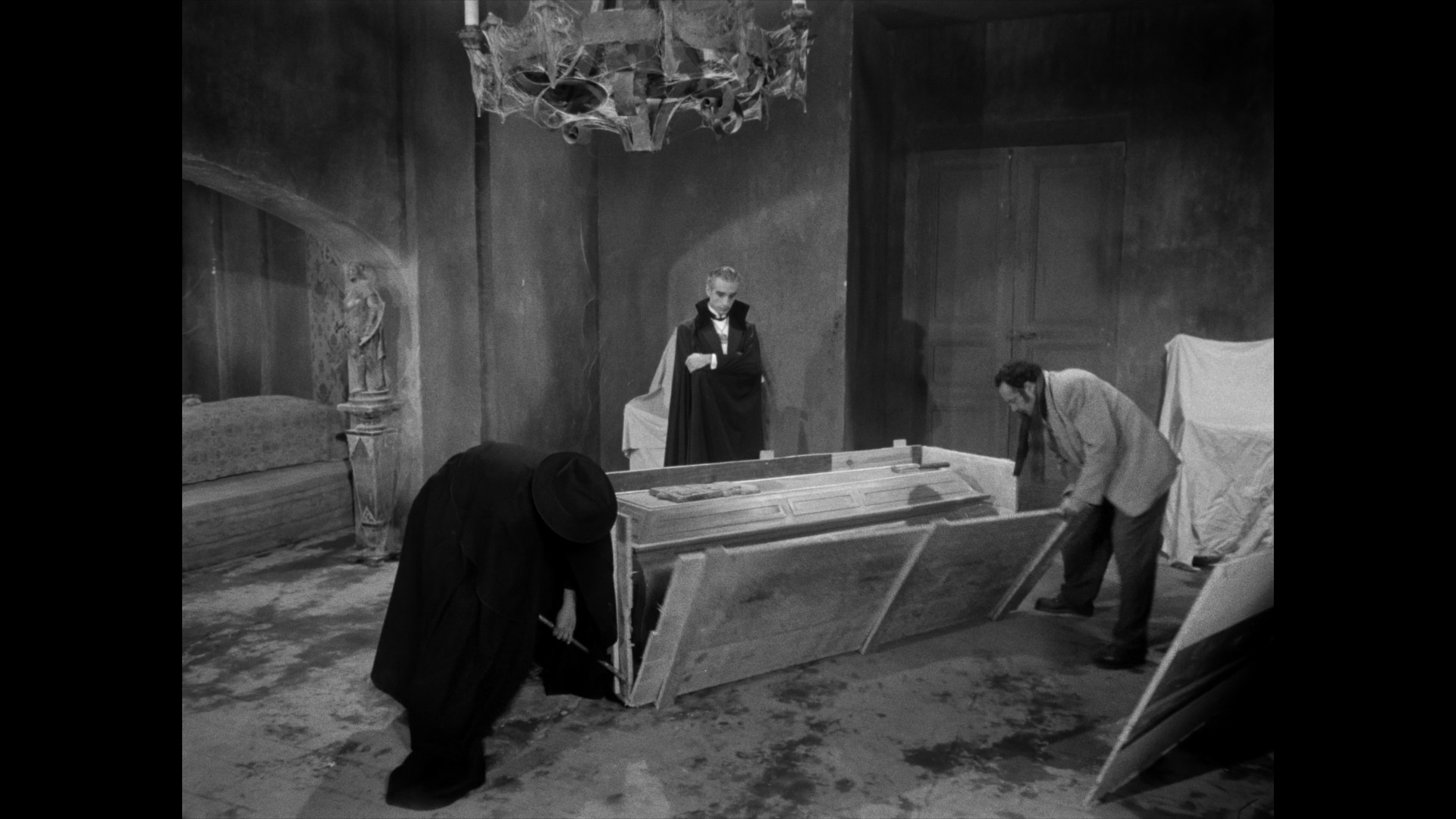 north of the border, 1957's The Vampire (El vampiro) and its rapidly-mounted sequel, The Vampire's Coffin (El ataúd del vampiro), are both the kind of pulpy, entertaining monster films that made them recurring entries in genre books for decades to come. Actually seeing them, especially in anything beyond English-dubbed TV prints, was a challenge for many years, but fortunately they've fared better more recently with a handful of worthwhile home video releases that finally lived up to those evocative photos that captured countless monster kids' imaginations.
north of the border, 1957's The Vampire (El vampiro) and its rapidly-mounted sequel, The Vampire's Coffin (El ataúd del vampiro), are both the kind of pulpy, entertaining monster films that made them recurring entries in genre books for decades to come. Actually seeing them, especially in anything beyond English-dubbed TV prints, was a challenge for many years, but fortunately they've fared better more recently with a handful of worthwhile home video releases that finally lived up to those evocative photos that captured countless monster kids' imaginations.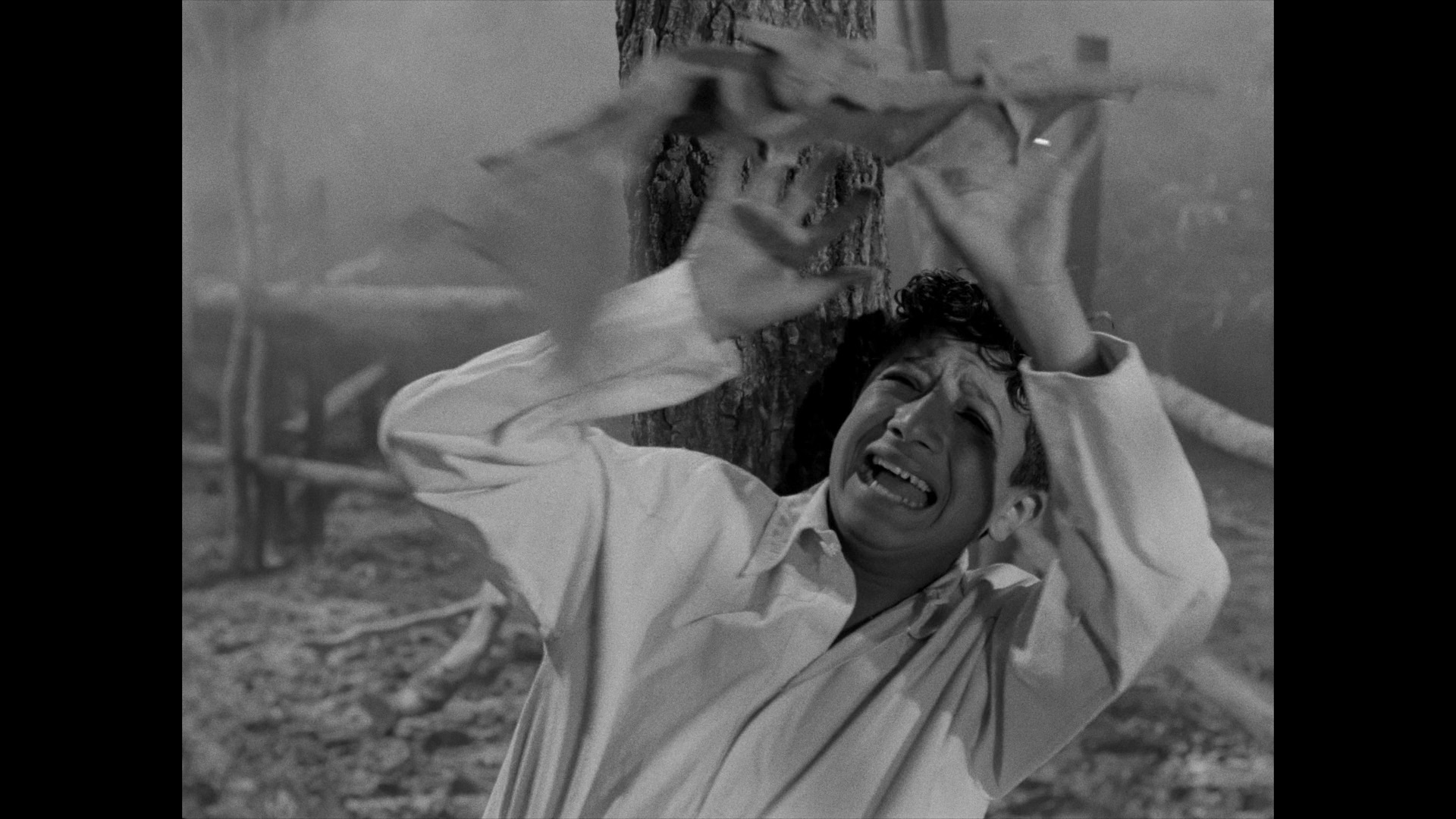 (Welter), who's returning to her family home, the Sycamores, to visit her dying aunt. At the station her uncle fails to pick her up, but she's joined by another
(Welter), who's returning to her family home, the Sycamores, to visit her dying aunt. At the station her uncle fails to pick her up, but she's joined by another 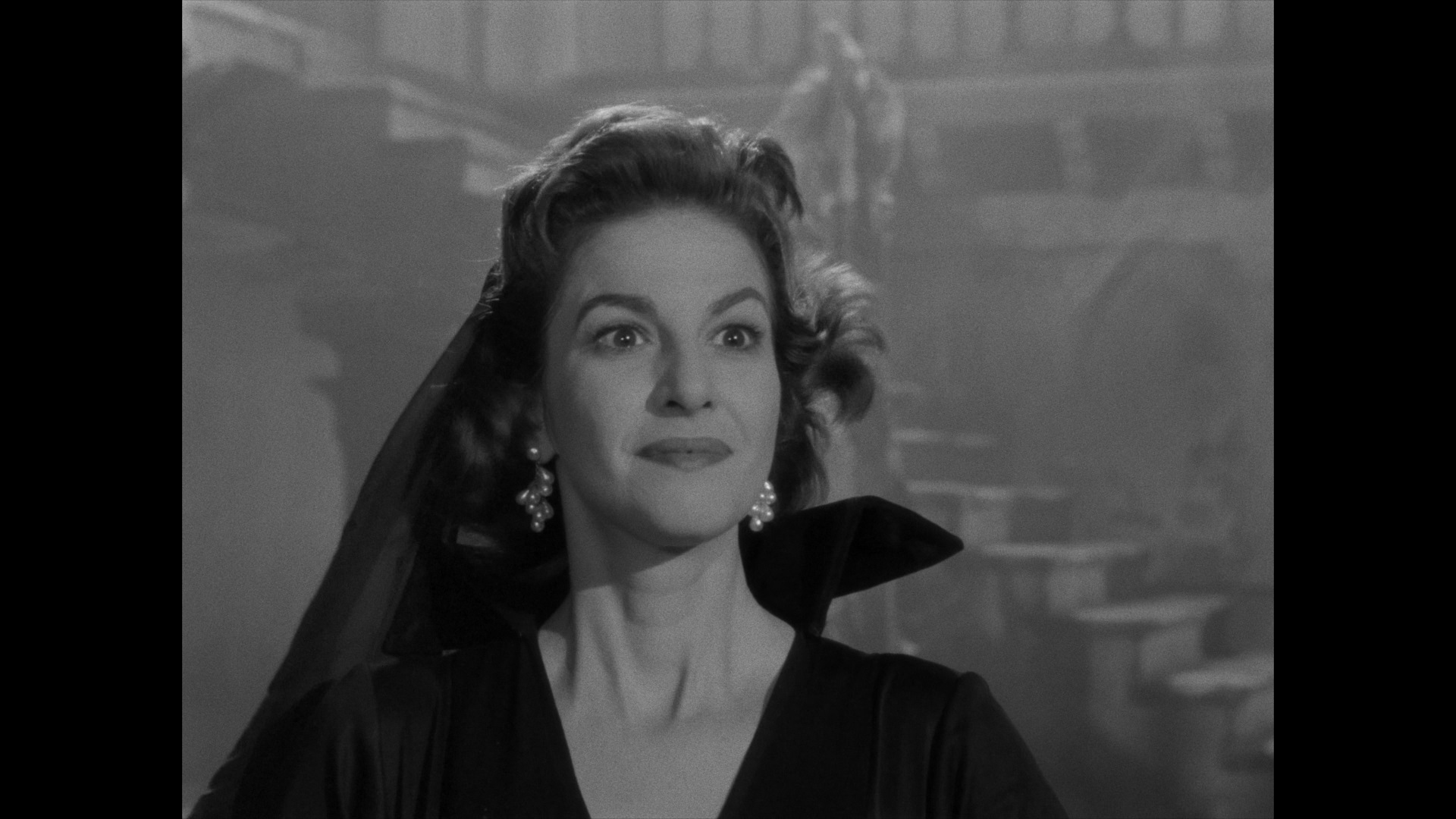 stranded passenger, a doctor named Enrique (The Brainiac's Salazar, also the producer). The pair hitch a ride on a carriage carrying the soil and, upon arrival, end up embroiled in the nefarious plans by the wealthy aristocrat Duval (Robles), whom we know from the pre-credits scene is actually a shape-shifting vampire named Count Luvad, to take over the Sycamores and its inhabitants. That includes vampirizing one of Marta's aunts, Eloise (Montejo), and targeting anyone else in his way before he makes his way to Marta herself as part of a larger plan to revive his brother from a century of limbo.
stranded passenger, a doctor named Enrique (The Brainiac's Salazar, also the producer). The pair hitch a ride on a carriage carrying the soil and, upon arrival, end up embroiled in the nefarious plans by the wealthy aristocrat Duval (Robles), whom we know from the pre-credits scene is actually a shape-shifting vampire named Count Luvad, to take over the Sycamores and its inhabitants. That includes vampirizing one of Marta's aunts, Eloise (Montejo), and targeting anyone else in his way before he makes his way to Marta herself as part of a larger plan to revive his brother from a century of limbo. 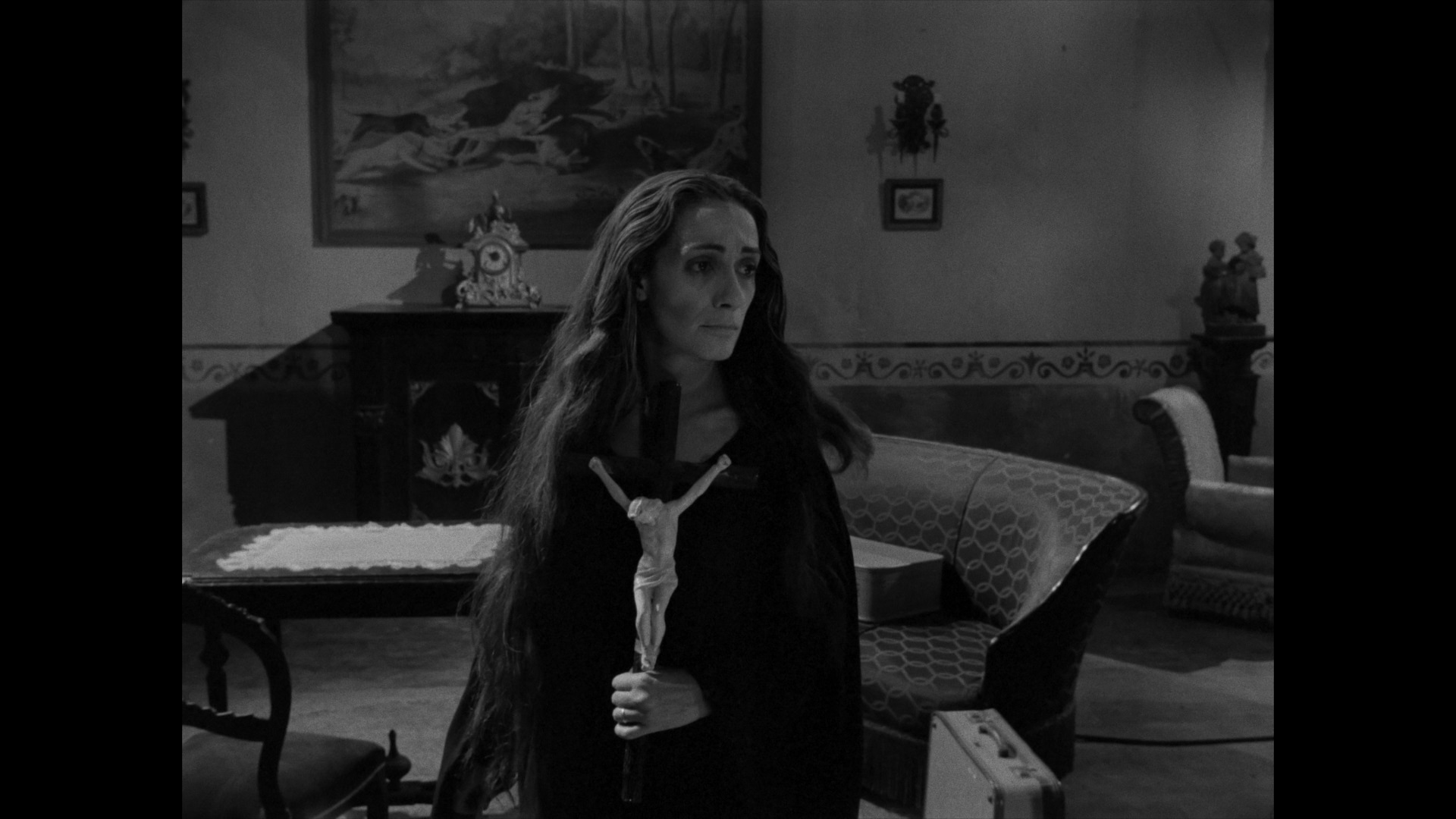 with fog, graveyards, spooky music, bats, and moody lighting, The Vampire is a blast from start to finish as well as an oft-noted link between the Universal cycle and the rip-roaring Dracula films from Hammer starting in 1958. Robles also made it into the history books as the first
with fog, graveyards, spooky music, bats, and moody lighting, The Vampire is a blast from start to finish as well as an oft-noted link between the Universal cycle and the rip-roaring Dracula films from Hammer starting in 1958. Robles also made it into the history books as the first 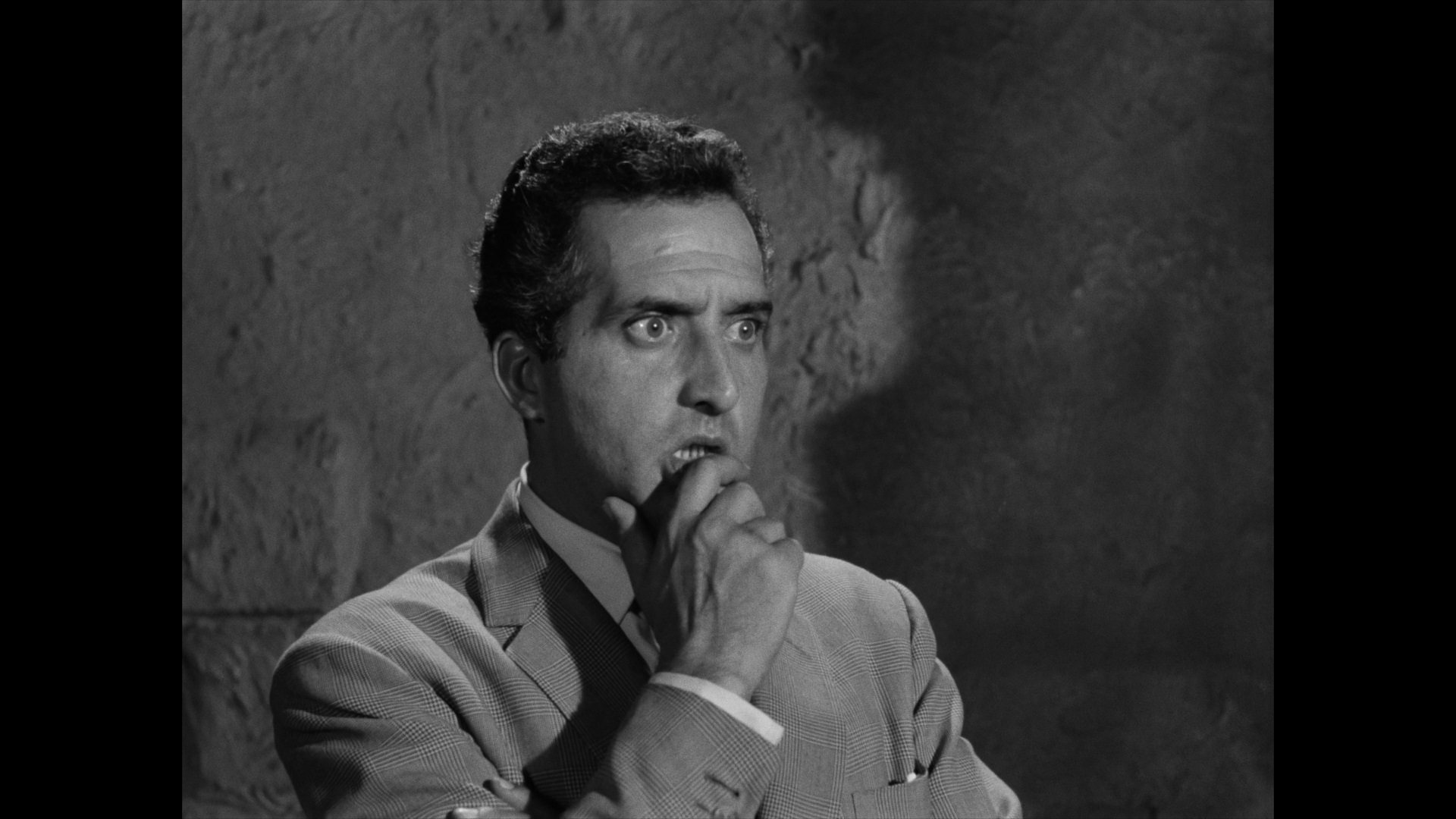 bona fide traditional screen vampire to bear canine fangs, which became a signature accessory thanks to the Christopher Lee, and he's great fun here as an imposing nobleman preying on the community. Absolutely matching him here is the striking Montejo, who's so compelling here she should have gotten her own spin-off movie.
bona fide traditional screen vampire to bear canine fangs, which became a signature accessory thanks to the Christopher Lee, and he's great fun here as an imposing nobleman preying on the community. Absolutely matching him here is the striking Montejo, who's so compelling here she should have gotten her own spin-off movie. 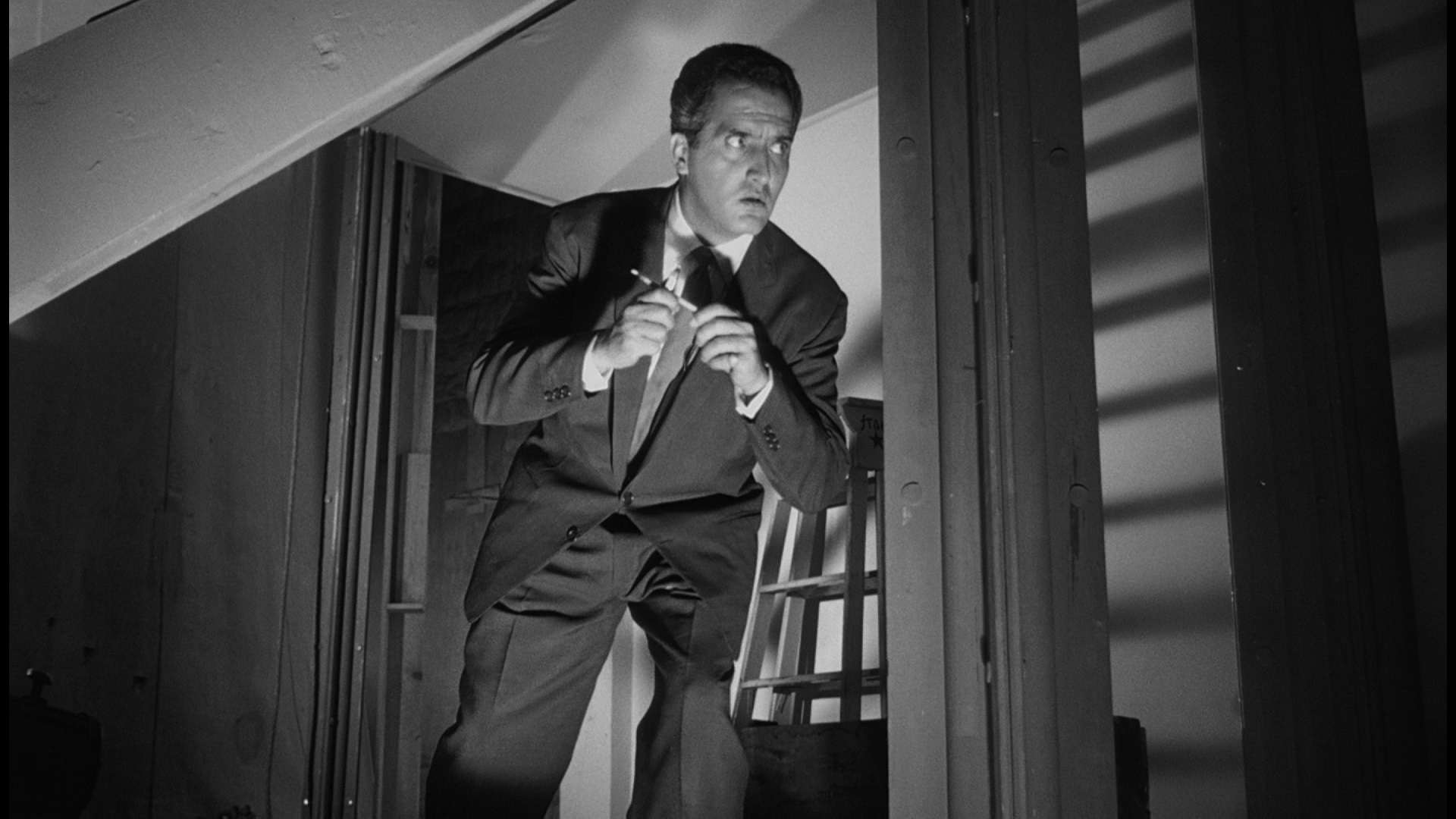 Maybe a notch below its predecessor simply because it can't find enough for
Maybe a notch below its predecessor simply because it can't find enough for 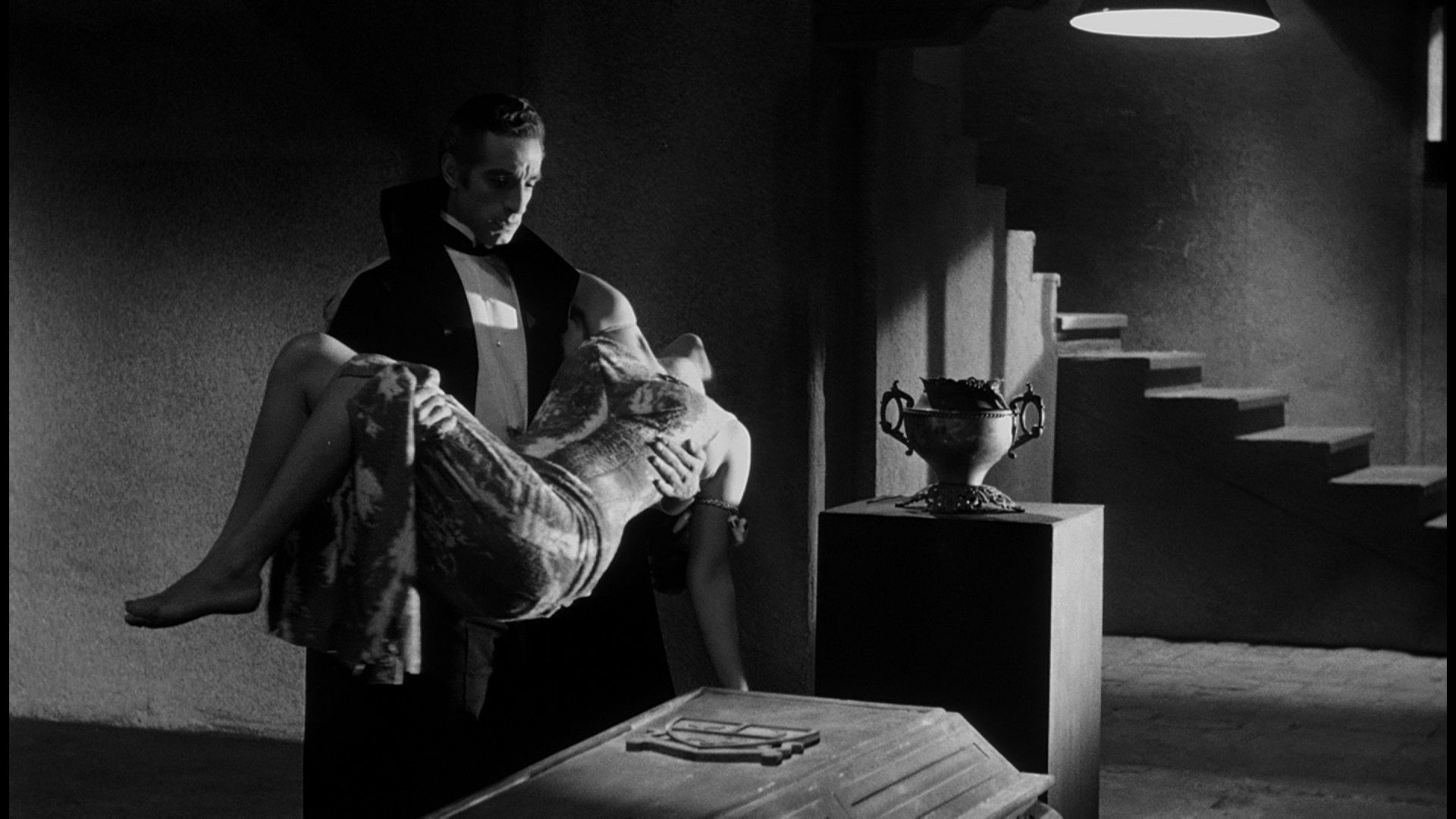 all the characters to do this time, The Vampire's Coffin is still tons of fun as it moves the action into a more modern-feeling hospital and torture dungeon wax museum. Again the look here is the star of the show, with inventive lighting compensating for what looks like a lower budget; though the Marta character feels like more of an obligation than a narrative necessity here, it's great to see the whole gang back together in an entry that could have easily spawned a third on if they'd felt so inclined.
all the characters to do this time, The Vampire's Coffin is still tons of fun as it moves the action into a more modern-feeling hospital and torture dungeon wax museum. Again the look here is the star of the show, with inventive lighting compensating for what looks like a lower budget; though the Marta character feels like more of an obligation than a narrative necessity here, it's great to see the whole gang back together in an entry that could have easily spawned a third on if they'd felt so inclined.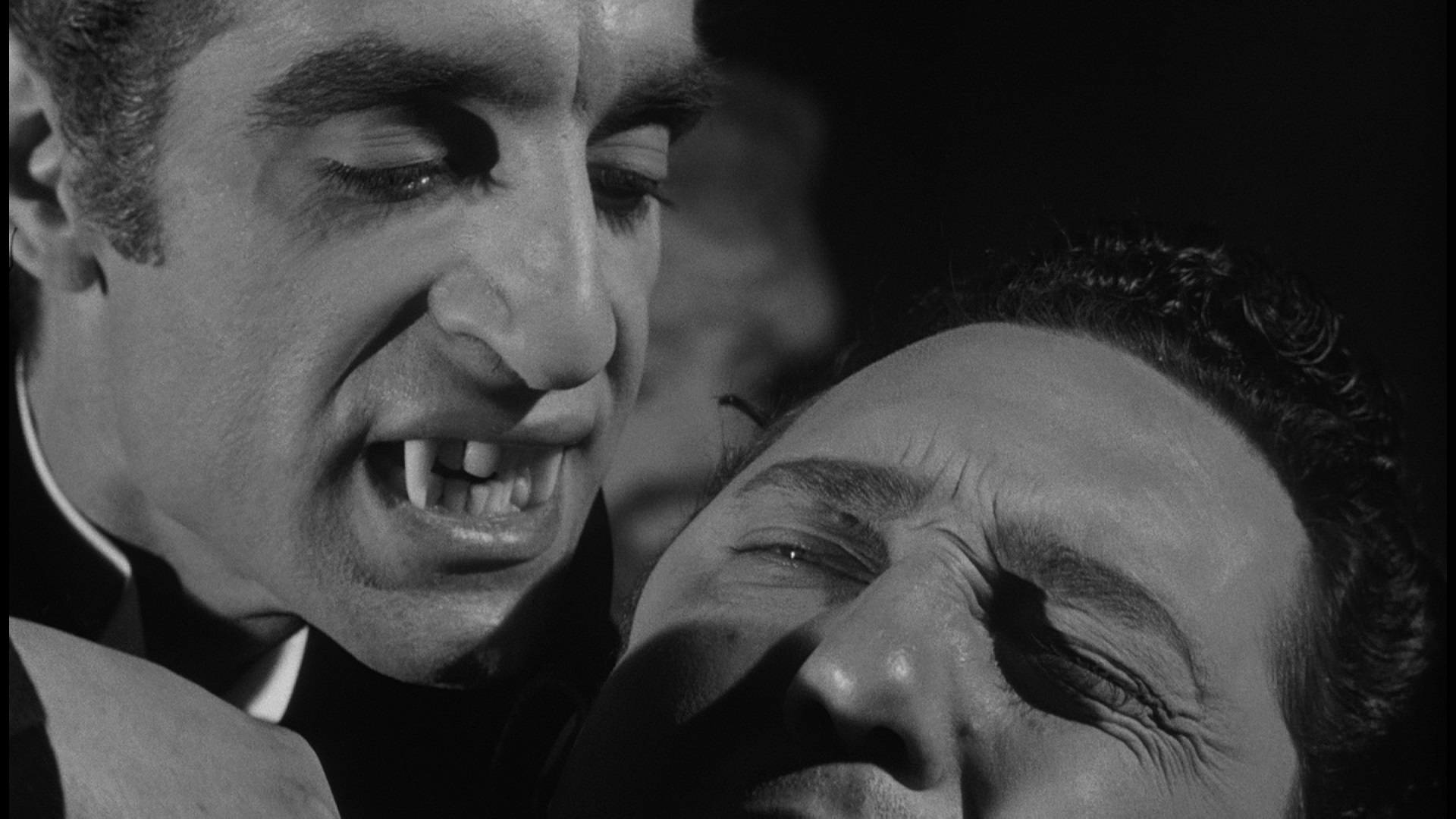 debuts as El Vampiro: Two Bloodsucking Tales from Mexico, with the first film sporting an astonishing 4K restoration from the original camera negative. It
debuts as El Vampiro: Two Bloodsucking Tales from Mexico, with the first film sporting an astonishing 4K restoration from the original camera negative. It 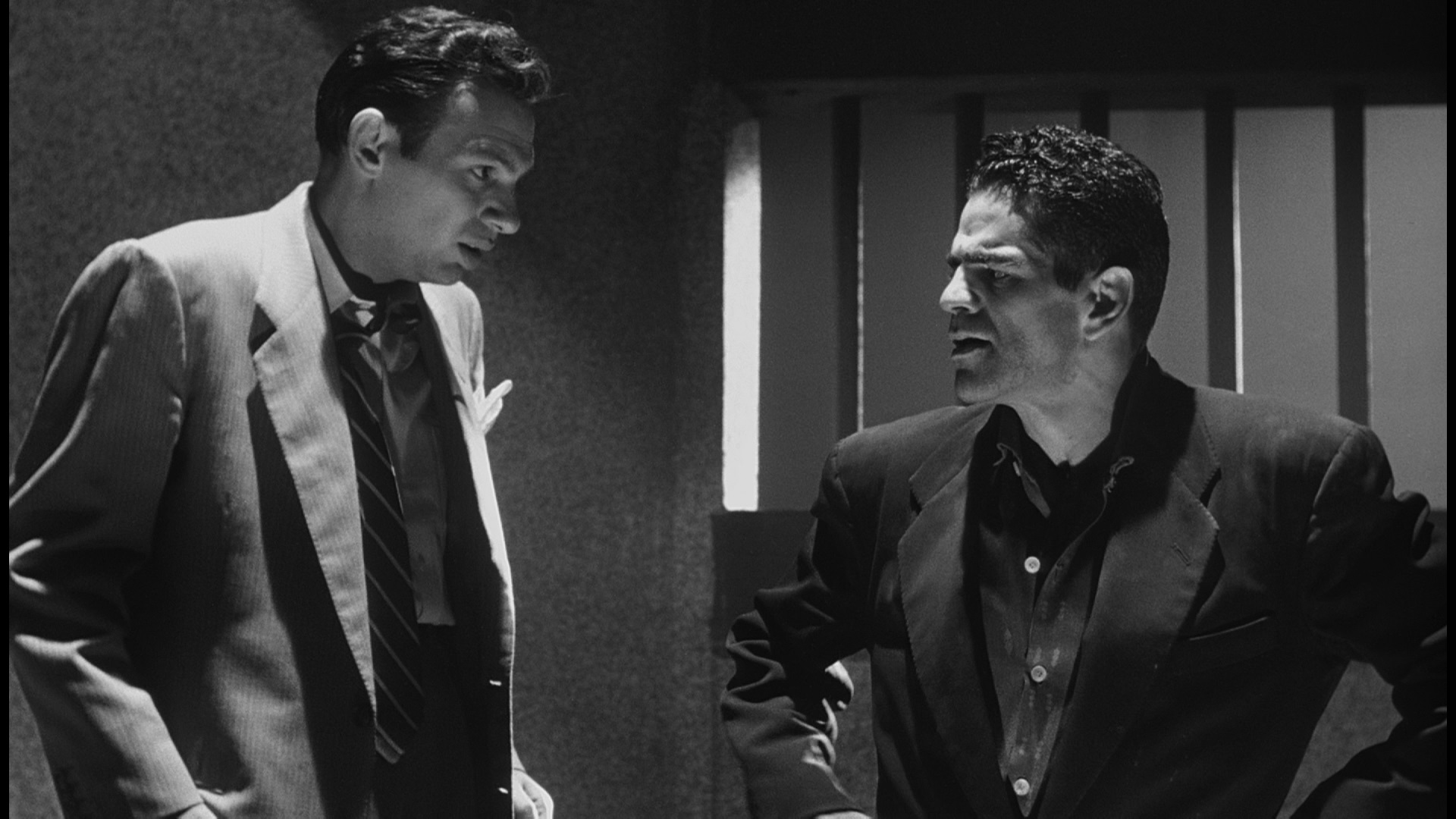 looks incredible in motion and is easily one of the best of the label's very worthy Mexican horror upgrades so far; again you get the Spanish and English tracks (both sound excellent) with optional English-translated or English SDH subtitles.
looks incredible in motion and is easily one of the best of the label's very worthy Mexican horror upgrades so far; again you get the Spanish and English tracks (both sound excellent) with optional English-translated or English SDH subtitles.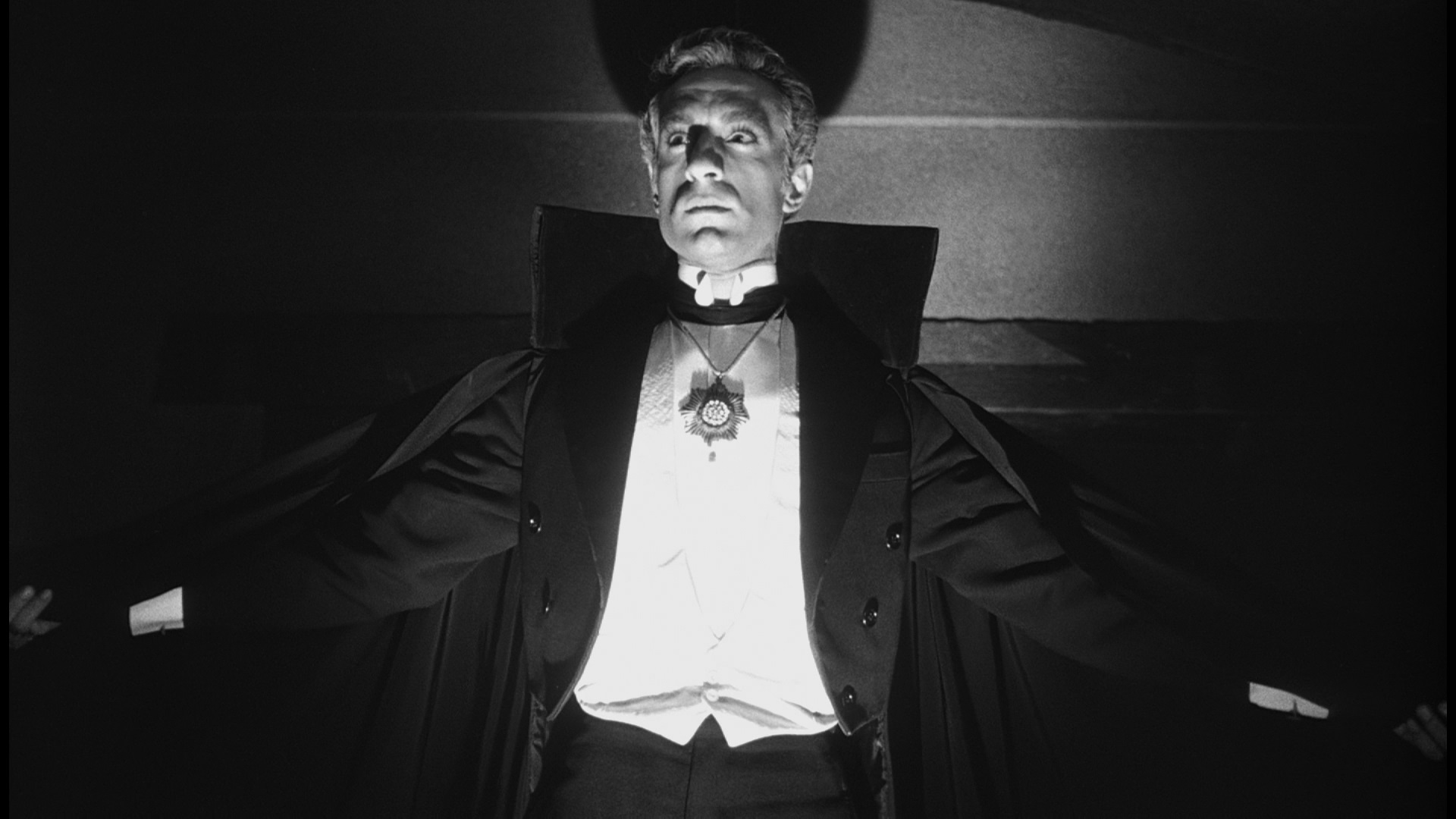 subtitled Spanish trailer (which is excellent) and an extensive image gallery. The second film is taken from lesser elements and is simply cited as a 2K scan, here
subtitled Spanish trailer (which is excellent) and an extensive image gallery. The second film is taken from lesser elements and is simply cited as a 2K scan, here 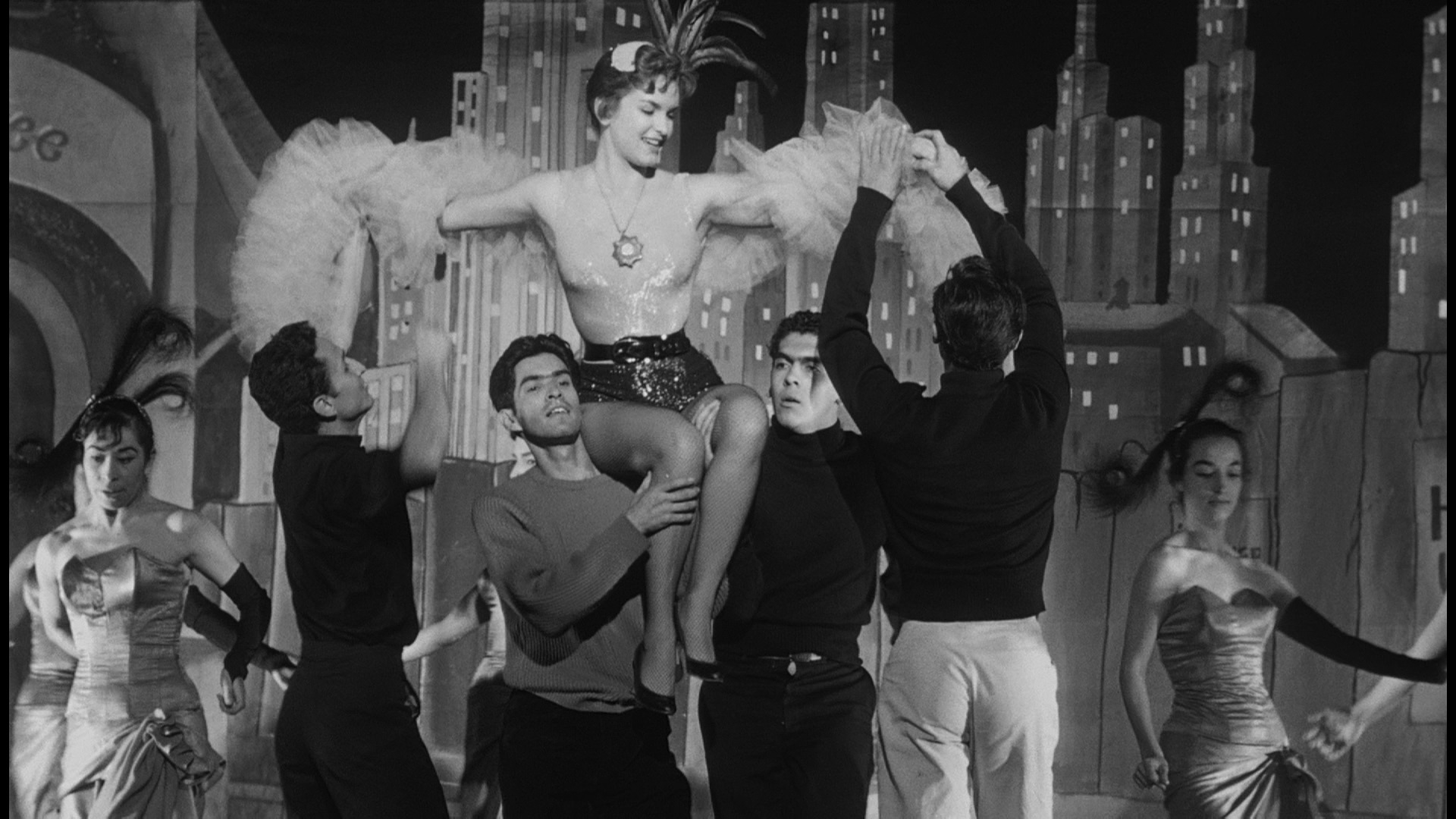 framed at 1.75:1 versus the 1.33:1 of the first one. It still looks better here than it ever has before, with the darker scenes in particular now benefiting from the extra resolution and detail. Again you the same language options, plus the Spanish trailer and an image gallery including the usual French photonovel. A new interview with writer Juan Ramón Obón, "Memories of a Storyteller" (21m40s), is an in-depth portrait of his father, screenwriter Ramón Obón (who wrote both films), focusing on his work process, his avid reading, and feverish output with 65 titles to his credit. Then in "The Great Mexican Vampire" (19m32s), horror historian Robert Coria dives into the life and career of Robles and how he connects to the treatment of vampirism and its moral implications in Mexican cinema. Finally in "From the Drawing Board" (14m42s), film historian Elisa Lozano studies the invaluable contributions of production designer Gunther Gerzso and the rich artistic community around him starting in the 1940s including numerous Spanish expats. The limited edition set also comes with an 80-page book featuring new essays by Jesús Palacios and David Wilt, archival essays by Eduardo de la Vega Alfaro and Carmen A. Serrano, archival cast interviews, and a sample of critical reactions.
framed at 1.75:1 versus the 1.33:1 of the first one. It still looks better here than it ever has before, with the darker scenes in particular now benefiting from the extra resolution and detail. Again you the same language options, plus the Spanish trailer and an image gallery including the usual French photonovel. A new interview with writer Juan Ramón Obón, "Memories of a Storyteller" (21m40s), is an in-depth portrait of his father, screenwriter Ramón Obón (who wrote both films), focusing on his work process, his avid reading, and feverish output with 65 titles to his credit. Then in "The Great Mexican Vampire" (19m32s), horror historian Robert Coria dives into the life and career of Robles and how he connects to the treatment of vampirism and its moral implications in Mexican cinema. Finally in "From the Drawing Board" (14m42s), film historian Elisa Lozano studies the invaluable contributions of production designer Gunther Gerzso and the rich artistic community around him starting in the 1940s including numerous Spanish expats. The limited edition set also comes with an 80-page book featuring new essays by Jesús Palacios and David Wilt, archival essays by Eduardo de la Vega Alfaro and Carmen A. Serrano, archival cast interviews, and a sample of critical reactions.![]()